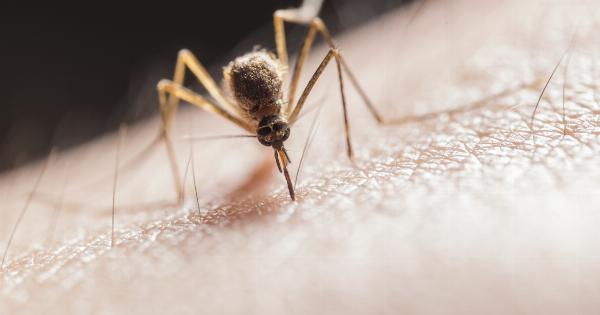The Zika virus, a mosquito-borne disease that emerged as a public health concern in 2015, continues to pose a threat to unborn children.
Infection with the Zika virus during pregnancy has been linked to microcephaly, a congenital condition characterized by an abnormally small head and underdeveloped brain. While the overall risk of microcephaly resulting from Zika infection is relatively low, studies suggest that approximately one in 100 Zika-infected pregnancies may lead to this devastating condition.
Understanding Zika Virus
The Zika virus is primarily transmitted by the Aedes mosquito, which is also responsible for spreading dengue and chikungunya viruses.
The virus was first identified in Uganda in 1947 but remained relatively unknown until it gained international attention during the outbreak in Brazil. The symptoms of Zika infection are usually mild and include fever, rash, joint pain, and conjunctivitis. Many infected individuals may not even experience symptoms, making it difficult to detect and control the spread of the virus.
Transmission to Unborn Children
Zika can be transmitted from a pregnant woman to her unborn child in various ways. The virus can cross the placenta and directly infect the developing fetus. Additionally, it can be transmitted during childbirth or through breastfeeding.
The greatest risk of transmission occurs when a pregnant woman is infected with Zika during the first trimester, although there have been cases of transmission at later stages of pregnancy as well.
The Link to Microcephaly
Microcephaly is a condition in which a baby’s head circumference is significantly smaller than expected for their age and sex. It often indicates an underdeveloped brain and is associated with cognitive and developmental delays.
The link between Zika infection during pregnancy and microcephaly was first observed in Brazil during the outbreak. Subsequent studies have provided compelling evidence supporting this association.
Evidence from Studies
A study published in The New England Journal of Medicine in 2016 reported that the risk of microcephaly among babies born to mothers infected with Zika during the first trimester was approximately 13%.
This estimated risk dropped to around 1% for infections occurring in the second or third trimester. Another study published in JAMA Pediatrics found that among infants with potential Zika exposure, approximately 6% had evidence of microcephaly or other Zika-related birth defects.
It is important to note that the risk of microcephaly depends on various factors, including the timing of infection during pregnancy and the presence of other co-factors.
Genetic factors, nutritional status, and co-infection with other viruses can influence the risk and severity of the outcome.
Prevention and Control
Preventing Zika infection during pregnancy is crucial to avoiding the risk of microcephaly in unborn children. The following measures can help reduce the risk of Zika transmission:.
1. Mosquito control: Reducing mosquito populations through insecticide use, elimination of breeding sites, and use of protective measures like bed nets and screens can help prevent mosquito bites.
2. Travel precautions: Pregnant women or couples planning to conceive should avoid traveling to areas with ongoing Zika transmission.
3. Safe sexual practices: Zika can also be transmitted through sexual contact. Consistent and correct use of condoms can reduce the risk, particularly for couples living in or returning from Zika-affected areas.
4. Screening and testing: Pregnant women should undergo regular screenings for Zika, especially if they live in or have traveled to areas with Zika transmission.
Testing is also recommended for infants born to mothers with confirmed or suspected Zika infection during pregnancy.
Impact on Families
Microcephaly has profound implications for affected families. Children with microcephaly often require specialized care and support for their physical, cognitive, and developmental needs.
Caring for a child with microcephaly can also place a tremendous emotional, financial, and social burden on families.
In addition to microcephaly, Zika infection during pregnancy has been linked to other neurological conditions and developmental abnormalities.
Still, much remains unknown about the long-term effects and impacts of Zika on the overall development and health of infected children.
Raising Awareness and Research
The recognition of the link between Zika infection and microcephaly has intensified global efforts to study the virus and develop effective prevention strategies.
Researchers around the world are working to better understand the mechanisms of Zika transmission, the factors influencing its impact on fetal development, and potential treatment options.
Raising awareness about Zika and its consequences is of utmost importance.
Providing accurate and up-to-date information to healthcare professionals, pregnant women, and communities at large can help in prevention, timely diagnosis, and support for affected families.
Conclusion
The impact of Zika infection on unborn children, specifically the risk of microcephaly, has raised concerns worldwide.
While the overall risk of microcephaly resulting from Zika infection is relatively low, it is crucial to take preventive measures to protect pregnant women and fetuses. Understanding the modes of transmission, practicing safe sexual practices, controlling mosquito populations, and raising awareness about Zika are essential steps towards combating this public health threat.






























